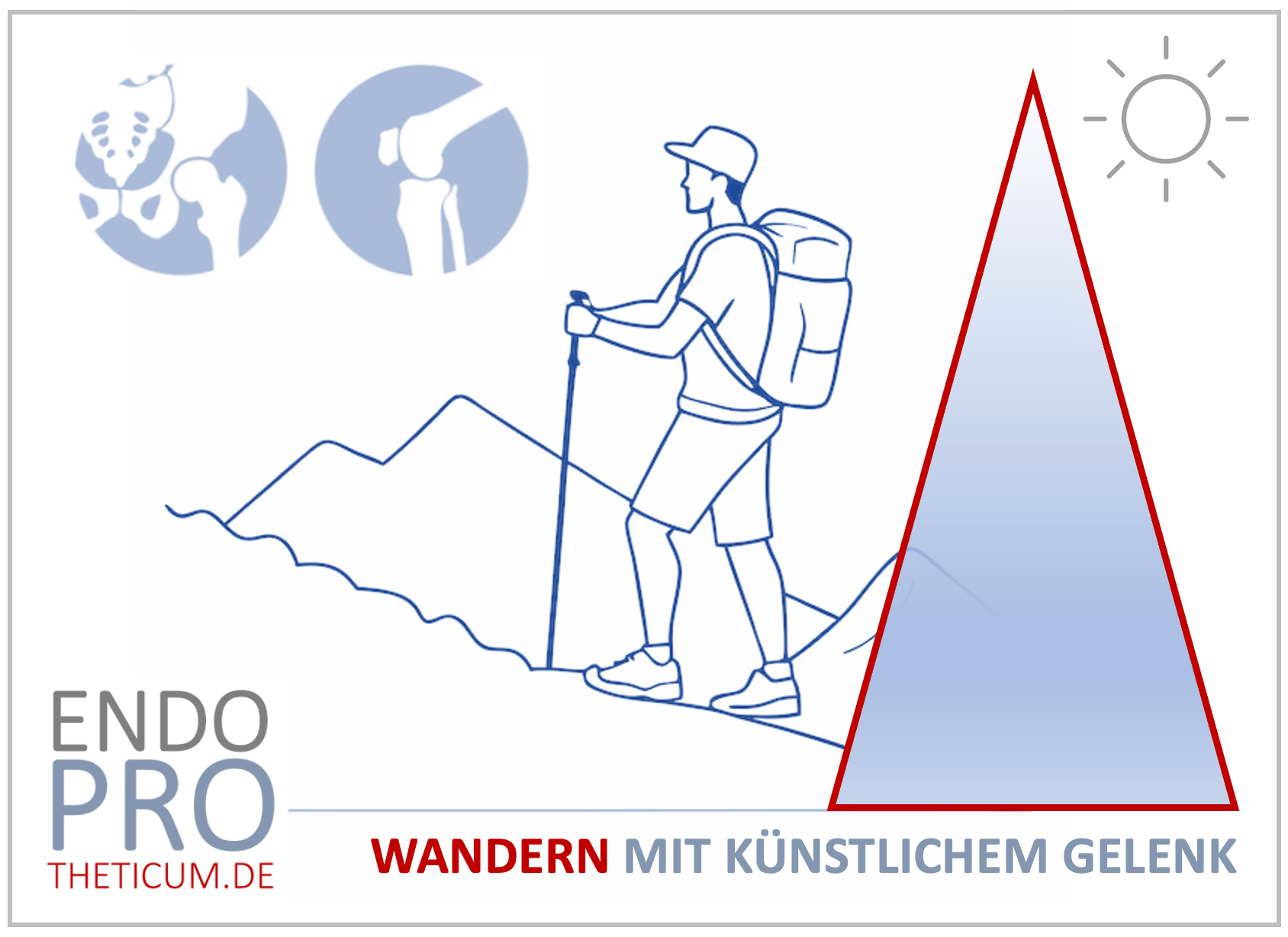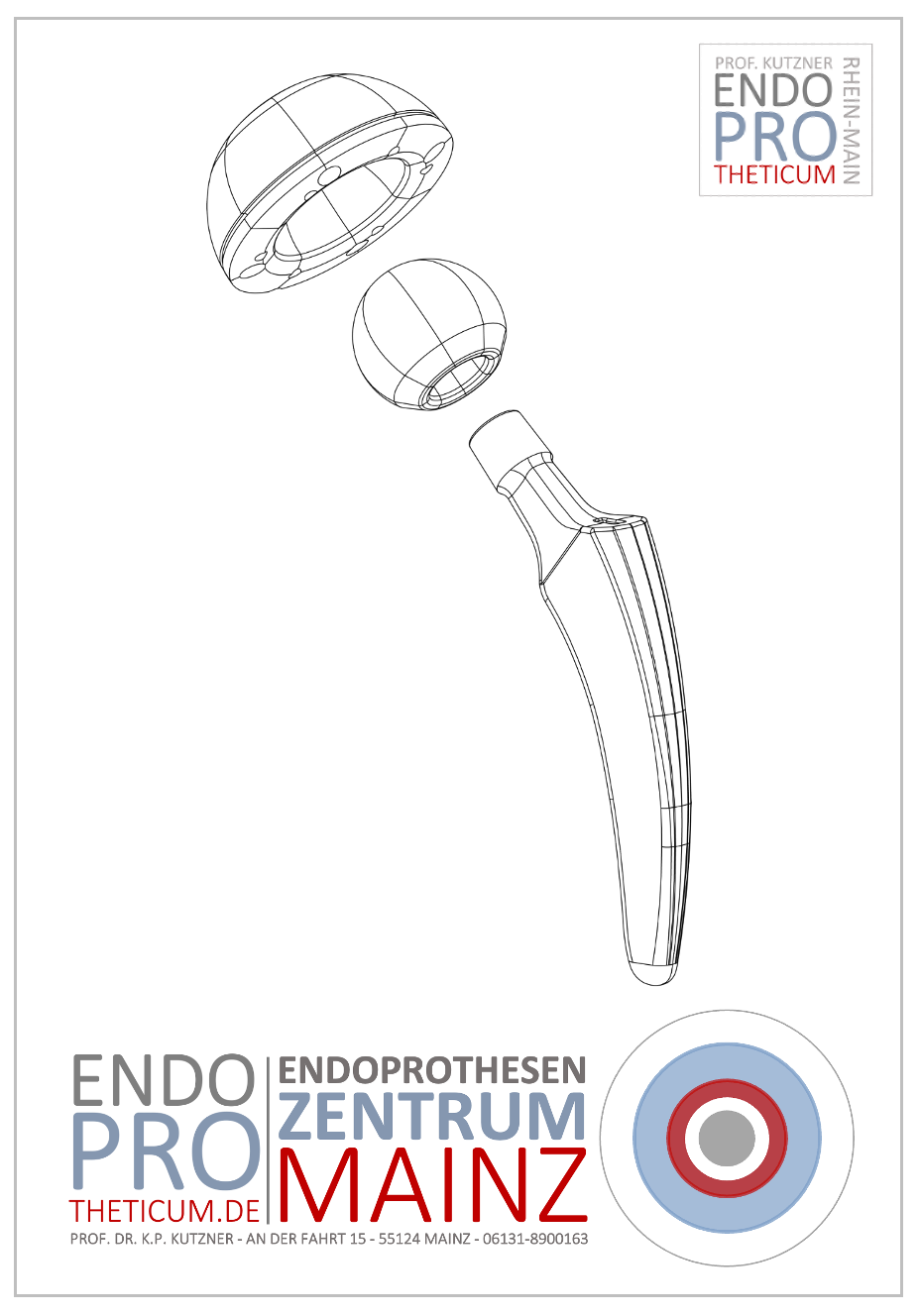Hiking with artificial joint - the gentle sport for more quality of life
Step by step back to nature -
How to enjoy hiking with artificial joint

Hiking is one of the most popular leisure activities worldwide and not only promotes physical fitness, but also intellectual well -being. However, many people with an artificial joint wonder whether they can continue to practice this sport. The good news is: thanks to modern implants, gentle operating techniques and targeted rehabilitation, hiking with a hip or knee prosthesis (hip-tep; knee-tep) is possible and can even contribute to the longevity of the prosthesis.
In this article you will learn everything you need to know about hiking with an artificial joint, from the advantages to the right preparation to specific recommendations for hip and knee prosthesis wearers.
Advantages of hiking with artificial joint
1. Joint -friendly movement
Hiking is a very joint -friendly activity compared to highly intensive sports such as jogging or tennis. Since walking produces less shock loads, the implant is not unnecessarily burdened.
2. Muscle building and stability
A strong muscles support the artificial joint and reduces the risk of incorrect loads. Regular hiking helps to strengthen the thigh and buttocks muscles, which is particularly important after a hip or knee surgery.
3. Improve mobility
The flexibility of the joints is promoted by the controlled movements during hiking. In addition, it can help to maintain the mobility and functionality of the implant in the long term.
4. Positive effects on the cardiovascular system
Hiking promotes blood circulation, improves oxygen absorption and reduces the risk of cardiovascular diseases. Patients with an endoprosthesis particularly benefit from these health advantages.
5. Psychological advantages
Regular movement in the fresh air increases general well -being, reduces stress and can relieve depressive moods.
The right preparation for hiking with an endoprosthesis
1. Individual advice in advance
Medical clarification is advisable before returning to the hiking sports. The treating orthopedic surgeon or physiotherapist can give an individual assessment to the resilience of the artificial joint.
2. Choice of suitable equipment
- Hiking shoes: Well -steamed, stable shoes reduce the impact load.
- Hiking sticks: They relieve the joints and improve the balance.
- Backpack with a hip belt: an even weight distribution protects the spine and joints.
3. Correct hiking technique with joint replacement
- Uniform, controlled steps avoid sudden load peaks.
- Always go slightly bent and use hiking sticks to relieve them.
- Take a regular breaks so as not to overwhelm the joint.
Hiking with hip prosthesis (hip-tep)
Advantages of a short sector prosthesis for hikers
Modern short sector prostheses enable better preservation of the bone and more physiological mobility. This type of prosthesis is a sensible alternative, especially for active people who like to hike.
Special features of hiking with a hip prosthesis
- Note the risk of luxation: Extreme movements should be avoided, especially in the first few months after the operation.
- Take the slope slowly: Pay attention to an even load when walking up.
Special challenges and adjustments
According to a hip prosthesis (hip-tep), it is particularly important to gradually increase the stress and get used to the new joint. The following points are essential:
- The right prosthesis: A short -time prosthesis offers some advantages over conventional hip prostheses. It enables better bone maintenance, more physiological power transmission and thus faster rehabilitation. This is particularly important for hikers because good mobility and stability are decisive.
- At the beginning: after the operation, short and layer routes should be started to slowly get the new joint used to the movement.
- Slow increase: Over time, more demanding routes with moderate gradients can be chosen. Going down should take place particularly carefully, since higher forces act on the joint.
- Optimize the gait image: an even and controlled gait is important to avoid overload. In the event of uncertainties, gait training by a physiotherapist can help.
- Real hiking technology: long steps or sudden change of direction should be avoided. Stable hiking sticks support the balance and relieve the joint.
Optimal conditions and recommendations
- Soft, springy substrates such as forest floor or meadow paths are ideal. Hard asphalt paths or stony mountain paths should be avoided as far as possible.
- Suitable footwear: hiking shoes with good damping and non -slip sole ensure additional stability.
- Use hiking sticks: These help to distribute the load evenly and improve stability on uneven terrain.
- Planning breaks: Regular breaks are important so as not to overload the joint.
Hiking with knee prosthesis (knee-tep)
Challenges and tips
- The knee is stronger than going upwards. Hiking sticks and a controlled walking style help here.
- Muscle building crucial: a strong thigh muscles support the knee joint and reduces the stress on the implant.
Hiking with a knee prosthesis (knee-tep) represents different challenges than with a hip prosthesis. The knee joint is particularly susceptible to shock loads and must therefore be spared in a targeted manner.
- , the knee can still feel unusual. A gentle and even increase in stress helps get used to the new joint.
- Create gradients and descents: When going up, care should be taken not to overflow the knee. When walking down, short steps and a controlled load are essential so as not to overload the prosthesis.
- Preserve flexibility: Regular stretching exercises help to maintain the mobility of the knee and avoid shortcuts.
- Improving stability: A well -trained thigh muscles relieve the prosthesis and promotes safe hiking.
Specific recommendations
- Choose suitable hiking trails: gentle climbs and wide paths are better than narrow, steep paths with an uneven surface.
- Adjust gradual frequency: The knee can also strain the knee too fast or long. A moderate pace is advisable.
- Avoid stairs and high levels: If stairs are inevitable, you should support yourself well and go slowly.
Recommended hiking routes with hip or knee prosthesis
Different routes are suitable depending on the fitness level:
- Easy: flat paths without large differences in altitude, e.g. B. bank paths.
- Medium: slight inclines with well -fortified paths.
- Difficult: steeper climbs and uneven paths should only be chosen with good preparation.
Experience reports from those affected
Many people with endoprostheses report that they are able to hike without any problems after the implantation. Through targeted training, the right technology and careful movement, they were able to regain their mobility and quality of life.
Conclusion: hiking with artificial joint - no problem!
Hiking is one of the best sports for people with a hip or knee prosthesis. The correct preparation, suitable equipment and adapted hiking technology enable safe and joint -friendly movement in nature. If you listen to your body and don't overwhelm yourself, you can benefit from the health advantages of hiking for many years.
MAKE AN APPOINTMENT?
You are welcome to make an appointment either by phone or online .



























